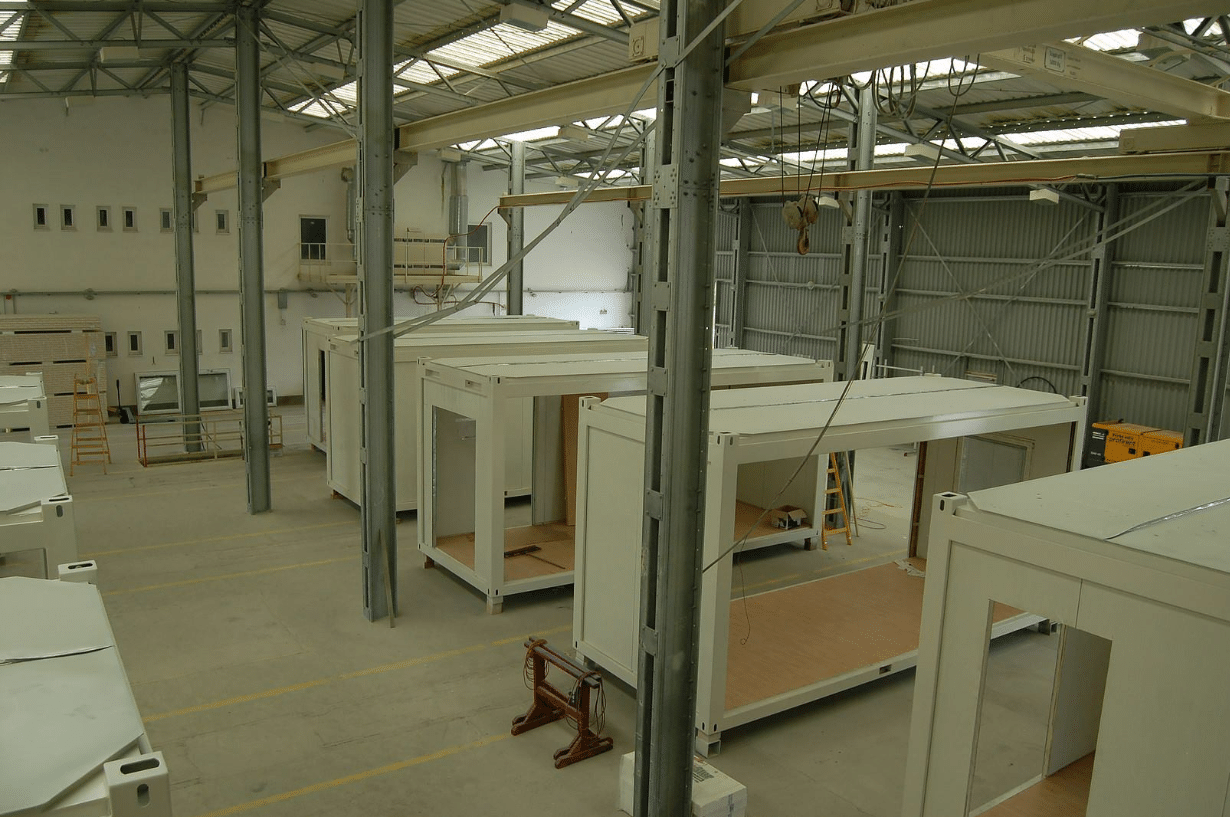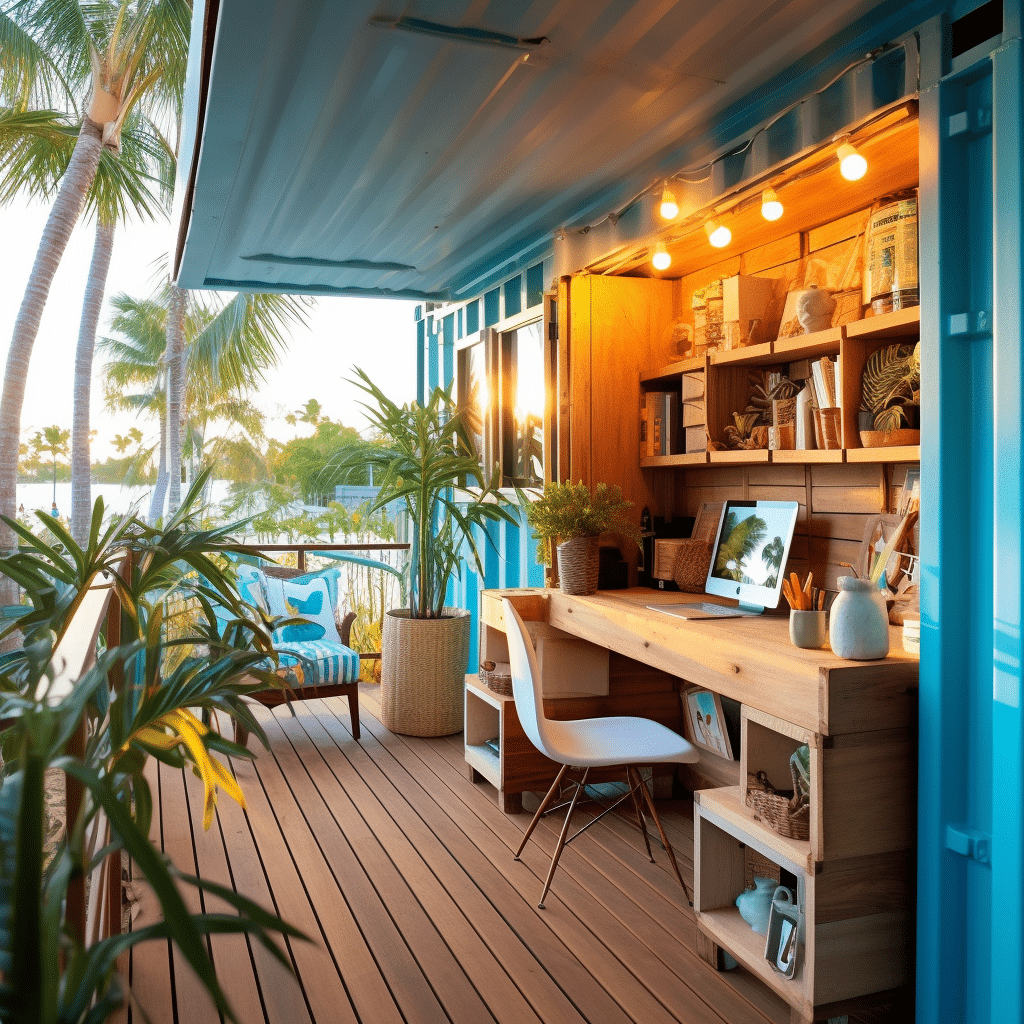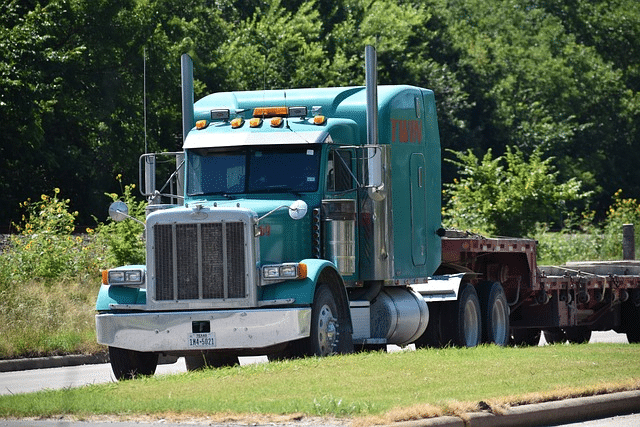Introduction: Shipping Container Workspaces – A Revolution in Design and Sustainability
The idea of converting new or used shipping containers into shipping container workspaces has become a trendy design option for social media-inspired DIYers and Fortune 500 brands.
They’re a sustainable and cost-effective alternative to traditional office spaces while also being eco-friendly.
Let’s explore how container workspaces provide the opportunity for customization, creativity, and versatility in design.
The Rise of Shipping Container Workspaces

Shipping container workspaces have gained popularity due to their affordability, sustainability, and flexibility. As urbanization rapidly expands globally, space has become a valuable commodity. Using shipping containers as workspaces offers an affordable solution that optimizes space utilization.
Even retail giants like Starbucks have embraced the trend of modified shipping containers by converting them into drive-thru coffee shops.
The surge in popularity of shipping container workspaces can be attributed to their cost-effectiveness, eco-friendly advantages, and limitless design possibilities.
This makes them appealing to businesses that value flexibility and creativity in their workspace solutions.
Benefits of Turning Shipping Containers Into Workspaces

Cost-Effective Alternative to Traditional Office Spaces
Shipping container offices and workspaces offer a major advantage in terms of cost-effectiveness. Conventional office spaces typically have steep rental fees, high energy bills, and maintenance expenses. In contrast, opting for shipping containers can lead to significant cost savings across all these aspects.
Using pre-built containers can avoid investing in costly materials and construction labor. Furthermore, their mobility and compact size allow shipping container workspaces to be established in non-traditional locations. Small spaces often come at a more affordable price than conventional office spaces.
Customizable and Versatile Design Options

Shipping container workspaces provide extensive design possibilities that can be tailored and customized to suit your company and specific requirements. You can select from a range of sizes and configurations that align with the number of employees and the nature of your business.
Moreover, the modular nature of shipping container structures enables the combination of multiple units to form expansive workspaces or multi-level buildings.
With options such as glass walls, skylights, and outdoor patios, the design possibilities for new containers are limitless, empowering you to craft a workspace that perfectly aligns with your brand and unique vision.
Eco-Friendly and Sustainable Building Material

An additional advantage of shipping containers is their eco-friendly and cost-effective nature as building materials.
They reduce waste by repurposing used shipping containers instead of allowing them to remain unused in ports or landfills while saving expenses typically associated with traditional building materials like wood or concrete.
This makes shipping containers a sustainable and financially efficient choice for construction projects.
If you want to learn more about the benefits of converting containers into offices, check out our previous article here.
Designing a Shipping Container Workspace

Although shipping container workspaces may seem like basic metal boxes, their design and construction involve meticulous attention to detail.
Here are some essential considerations to bear in mind when developing a shipping container office space or workspace:
Choosing the right size and number of containers for your workspace

To begin designing a shipping container workspace, the initial task is to assess the number of containers needed and their appropriate sizes.
Shipping containers come in various lengths, typically ranging from 10 feet to 40 feet, and can be stacked or positioned alongside each other.
The space requirements of your business operations and budgetary considerations will determine the number of containers required.
Planning the layout and interior design of your container workspace


The interior layout of your shipping container workspace unit holds equal significance to its exterior aesthetics. During the layout planning phase, it’s crucial to consider the intended usage of the space and the necessary equipment or furniture.
Consider factors such as traffic flow, lighting arrangements, and available storage options.
Some individuals prefer to preserve the container’s original industrial appeal by leaving the walls bare or applying an industrial-style finish to them.
Adding necessary amenities (electricity, plumbing, HVAC)

To ensure that your shipping container workspace meets the requirements of daily functionality, it is crucial to incorporate essential amenities such as electrical wiring, solar panels, plumbing for bathrooms or sinks, heating/cooling systems (HVAC), and insulation.
It’s important to note that these additions involve precise planning as they necessitate cutting through the metal walls of each container.
To guarantee a safe and code-compliant installation, enlisting the services of professionals experienced in working with containers is advisable. Their expertise will ensure that all the necessary electrical systems and amenities are integrated securely and in adherence to the relevant regulations.
Check out our previous article to learn more about container design and detailed steps to ensure you comply with local regulations.
Examples of Shipping Container Workspaces
Creative container workspaces (e.g., The “Boxpark” in London)

Shipping container workspaces have gained significant popularity among retail companies aiming to establish a distinctive and innovative customer experience. An outstanding illustration of this trend is the “Boxpark” located in London, which was ingeniously constructed using 80 recycled shipping containers.
The space encompasses a range of amenities such as cafes, meeting rooms, restaurants, and retail shops, interconnected by walkways crafted from repurposed shipping containers and pallets.
Using industrial-designed containers imparts a unique and unmistakable appearance that aligns with the founder’s emphasis on creativity and innovation.
Container stores (e.g., Starbucks drive-thru in Colorado)

Shipping container workspaces present an excellent solution for small business owners seeking an affordable and customizable alternative to conventional brick-and-mortar stores leasing offices.
A notable example is the opening of Starbucks’ inaugural drive-thru location constructed entirely from shipping containers in Colorado.
The structure comprises two stacked containers with generously sized windows, ensuring ample natural light floods the interior and a comfortable space.
This distinctive design has garnered positive feedback from customers who value the eco-friendly approach to coffee service and appreciate the unique ambiance created by the shipping container workspace.
Container art studios and galleries (e.g., “Container Yard” in Los Angeles)

Shipping container workspaces have also made a mark in the realm of art and design. An excellent illustration is the renowned art gallery “Container Yard” in Los Angeles, where vibrant shipping containers are stacked four stories high to house captivating exhibitions.
The juxtaposition of the containers’ industrial aesthetic with the striking murals adorning their exteriors by esteemed street artists such as Shepard Fairey and Tristan Eaton creates a visually compelling experience.
Visitors can easily access each exhibition space by navigating through the gallery using winding metal staircases that interconnect the floors.
These examples underscore the versatility of shipping container workspaces in creating distinct environments for temporary projects that align with their purpose or brand identity while incorporating sustainable materials.
Be sure to check out the ModBetter gallery for a glimpse of the workspaces we’ve also created ourselves.
Challenges to Consider
Permits and zoning regulations

One of the primary hurdles construction companies have in establishing a shipping container workspace is the acquisition of permits and adherence to zoning regulations. Numerous cities and towns have specific guidelines concerning building codes, land usage, and the occupancy of container offices.
Researching and understanding these regulations before starting the project or job site is essential.
Doing so will mitigate potential issues with local authorities and guarantee a smooth process for you and your team in the long run.
Transportation logistics for delivery and installation

Using shipping containers as workspaces presents a challenge in terms of transportation logistics. These containers are large, weighty objects that necessitate specialized equipment for transportation.
Ensuring your property has sufficient space for a delivery truck or crane to maneuver is crucial.
Additionally, if the container needs to be elevated above ground level, the availability of loading docks or ramps must be considered. Proper planning for these logistical aspects is vital to ensure a seamless delivery process.
Insulation and weatherproofing

Insulation, air conditioning, and weatherproofing are vital to creating a comfortable shipping container workspace. Steel construction makes shipping containers conductive, leading to temperature extremes.
Proper insulation is crucial for minimizing heat loss in winter and heat gain in summer. Additionally, a watertight seal prevents water leakage during rainstorms or flooding.
While your potential customers transforming shipping containers into workspaces is exciting, it requires preparation for insulation, air conditioning, and weatherproofing challenges.
You can establish a functional and comfortable workspace within your shipping container by effectively planning ahead and working with trusted experts.
Conclusion

Recap of Benefits
Shipping container workspaces are popular due to their unique benefits, cost-effectiveness, and sustainability. They offer customization, versatility, and aesthetic appeal beyond just a workspace.
Challenges to Consider
However, challenges exist. Transportation logistics and permitting can be complex. Insulation and weatherproofing need attention, especially for repurposed containers.
Future Trends in Shipping Container Workspaces
The COVID-19 pandemic has increased the demand for secure remote workspaces like shipping container offices. These structures will continue to expand into residential housing and find applications in remote areas in hospitality, healthcare, education, and disaster relief efforts.
At ModBetter, we specialize in converting shipping containers into everything from offices to restaurants, give us a call; we’d be happy to help bring your designs to life.





